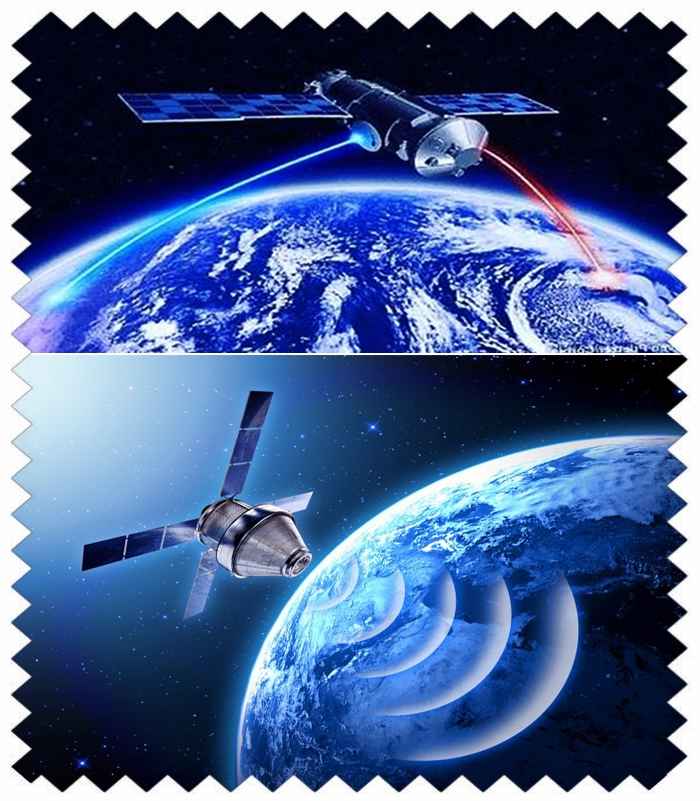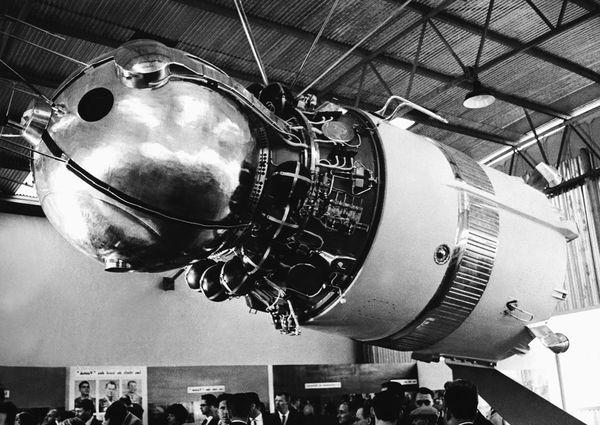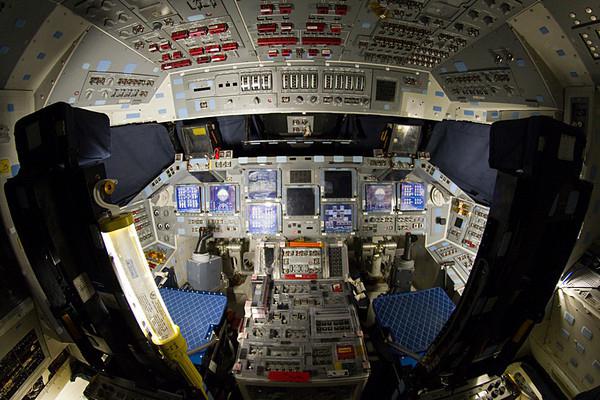For the first time, an artificial Earth satellite was launched in 1957. Since that time, the word "satellite" has appeared in all world languages. Today there are more than a dozen of them, and each has its own name.
Artificial satellites of our planet are called flying spacecraft. They are launched into orbit and rotate in a geocentric orbit. AES are created for applied and scientific purposes.
The first launch of such a device was on 4.10.1957. It is he who is the first celestial body artificially created by people. To create it, the achievements of Soviet computer technology, rocket technology, and also celestial mechanics were used. With the help of the first satellite, scientists were able to measure the density of all atmospheric layers, find out the features of the transmission of radio signals in the inosphere, check the accuracy and reliability of technical solutions and theoretical calculations that were used to output the satellite.
What are the Earth satellites? Views
They are all subdivided into:
- research apparatus.,
- applied.
![]()
It depends on what tasks they are solving. With the help of research vehicles, it is possible to study the behavior of celestial objects in the Universe and a significant volume of outer space. Research devices include: orbital astronomical observatories, geodetic, geophysical satellites. Applied include: meteorological, navigation and technical, communication satellites and satellites for research land resources... There are also artificially created satellites of the Earth, designed to fly people into space, they are called "manned".
What orbits do Earth satellites fly in? At what altitude?
Those satellites in equatorial orbit are called equatorial, and those in polar orbit are called polar. There are also stationary models that have been launched into a circular equatorial orbit, and their movement coincides with the rotation of our planet. Such stationary vehicles hang motionless over any specific point on the Earth.

The parts separated from the satellite during the launch into orbit are often also called Earth satellites. They belong to secondary orbital objects and are used for scientific observations.
The first five years after the first launch of the satellite (1957-1962) were called in a scientific way. For their name, they took the launch year and one Greek letter corresponding to the number in order in each specific year. With the increase in the number of launched artificial vehicles from the beginning of 1963, they began to be called the year of launch and only one Latin letter. AES can have different design schemes, different sizes, differ in weight, and the composition of onboard equipment. The satellite is powered by solar panels, which are located on the outer part of the hull.
When the satellite reaches an altitude of 42164 kilometers from the center of our planet (35786 km from the earth's surface), it begins to enter the zone where the orbit will correspond to the rotation of the planet. Due to the fact that the movement of the apparatus occurs at the same speed as the movement of the Earth (this period is equal to 24 hours), it seems that it stands still only above one longitude. This orbit is called geosynchronous.
Missions and programs of flights around the Earth
The Meteor meteorological system was created back in 1968. It includes not one, but several satellites, which are simultaneously in different orbits. They observe the cloud cover of the planet, fix the contours of the seas and continents, about which they transmit information to the Hydrometeorological Center.

Satellite data are also important in the process of conducting space photography used in geology. With its help, it is possible to discover large geological structures associated with mineral deposits. They help to clearly record forest fires, which is important for taiga expanses, where it is impossible to quickly notice a large fire. By using space images you can consider the features of soils and relief, landscapes, the distribution of ground and surface waters. With the help of satellites, it is possible to track changes in the vegetation cover, which is especially important for agricultural specialists.
Interesting facts about earth satellites

- PS-1 was the first satellite to go into near-earth orbit. Its launch was carried out from the USSR test site.
- The creator of the PS-1 was the designer Korolev, who could have received the Nobel Prize. But in the USSR it was not customary to assign achievements to one person, everything was common. Therefore, the creation of the artificial satellite was an achievement of the entire people of the USSR.
- In 1978, the USSR launched a spy satellite, but the launch was unsuccessful. The apparatus included nuclear reactor... When it fell, it infected an area of over 100,000 square kilometers.
- The IZS launching scheme resembles a stone throw. It needs to be "thrown" from the landfill at such a speed that it itself can rotate around the planet. The satellite launch speed should be equal to 8 kilometers per second.
- A copy of the PS-1 could be purchased on Ebay at the beginning of the 21st century.
Spacecraft in all their diversity are both the pride and concern of mankind. Their creation was preceded by a centuries-old history of the development of science and technology. The space era, which allowed people to look from the outside at the world in which they live, lifted us to a new stage of development. A rocket in space today is not a dream, but a matter of concern for highly qualified specialists who are faced with the task of improving existing technologies. What types of spacecraft are distinguished and how they differ from each other will be discussed in the article.
Definition
Spacecraft is a generic name for any device designed to operate in space. There are several options for classifying them. In the simplest case, manned and automatic spacecraft are distinguished. The former, in turn, are subdivided into spaceships and stations. Different in their capabilities and purpose, they are similar in many respects in structure and equipment used.
Flight features
After launch, any spacecraft goes through three main stages: launch into orbit, flight itself, and landing. The first stage presupposes the development by the vehicle of the speed required to enter space. In order to get into orbit, its value must be 7.9 km / s. Complete overcoming of gravity assumes the development of the second equal to 11.2 km / s. This is how a rocket moves in space when its target is the distant parts of the space of the Universe.

After release from attraction, the second stage follows. In the process of orbital flight, the movement of spacecraft occurs by inertia, due to the acceleration imparted to them. Finally, the landing stage involves reducing the speed of a ship, satellite or station to almost zero.
"Filling"
Each spacecraft is equipped with equipment to match the tasks that it is designed to solve. However, the main discrepancy is associated with the so-called target equipment, which is necessary just for obtaining data and various scientific research. The rest of the spacecraft equipment is similar. It includes the following systems:
- power supply - most often solar or radioisotope batteries, chemical accumulators, nuclear reactors supply spacecraft with the necessary energy;
- communication - carried out using a radio wave signal, with a significant distance from the Earth, accurate antenna pointing becomes especially important;
- life support - the system is typical for manned spacecraft, thanks to it it becomes possible for people to stay on board;
- orientation - like any other spacecraft, spacecraft are equipped with equipment to constantly determine their own position in space;
- motion - spacecraft engines allow changes in flight speed as well as direction.
Classification
One of the main criteria for dividing spacecraft into types is the operating mode that determines their capabilities. On this basis, devices are distinguished:
- located in geocentric orbit, or artificial satellites Earth;
- those whose purpose is to study remote areas of space - automatic interplanetary stations;
- used to deliver people or necessary cargo to the orbit of our planet, they are called spaceships, can be automatic or manned;
- created for people to stay in space for a long period - this;
- those involved in the delivery of people and goods from orbit to the surface of the planet, they are called descent;
- able to explore the planet, directly located on its surface, and move around it, are planetary rovers.
Let's dwell on some types in more detail.
AES (artificial earth satellites)
The first spacecraft launched into space were artificial earth satellites. Physics and its laws make putting any such device into orbit a daunting task. Any apparatus must overcome the gravity of the planet and then not fall on it. To do this, the satellite needs to move with or a little faster. Above our planet, a conditional lower boundary of the possible location of the satellite is distinguished (passes at an altitude of 300 km). Closer placement will lead to a fairly rapid deceleration of the vehicle in atmospheric conditions.
Initially, only launch vehicles could deliver artificial earth satellites into orbit. Physics, however, does not stand still, and today new methods are being developed. For example, one of the most frequently used methods lately is launching from another satellite. There are plans to use other options as well.
The orbits of spacecraft revolving around the Earth can run at different heights. Naturally, the time required for one lap also depends on this. Satellites, whose orbital period is equal to days, are placed on the so-called It is considered the most valuable, since the devices on it seem to be motionless for the terrestrial observer, which means that there is no need to create mechanisms for rotating the antennas.
AMS (automatic interplanetary stations)
A huge amount of information about various objects Solar system scientists receive using spacecraft directed outside the geocentric orbit. AMC objects are planets, asteroids, comets, and even galaxies available for observation. The tasks that are set for such devices require tremendous knowledge and efforts from engineers and researchers. AMC missions are the embodiment of technological progress and are at the same time its stimulus.
Manned spaceship
The devices created to deliver people to the designated target and return them back are technologically in no way inferior to the described types. It is to this type that Vostok-1 belongs, on which Yuri Gagarin made his flight. 
The most difficult task for the creators of a manned spacecraft is to ensure the safety of the crew during their return to Earth. Also an important part of such devices is the emergency rescue system, which may become necessary during the launch of a spacecraft into space using a launch vehicle.
Space vehicles, like all astronautics, are constantly being improved. Recently, in the media, one could often see reports about the activities of the Rosetta probe and the Phila lander. They embody all the latest achievements in the field of space shipbuilding, calculating the movement of the device, and so on. The landing of the Philae probe on a comet is considered an event comparable to Gagarin's flight. The most interesting thing is that this is not the crown of humanity's possibilities. We are still waiting for new discoveries and achievements in terms of both space exploration and construction.
The first artificial Earth satellite was launched in the Russian Federation on October 4, 1957. Russian word"Satellite" entered the lexicon of peoples different countries... Satellites have become good helpers for specialists in various fields of science and sectors of the national economy. Thousands of artificial satellites constantly revolve in outer space around our planet at heights from several hundred to tens of thousands of kilometers. They conduct a variety of observations of the Earth and the Sun. The famous Soviet orbital station Salyut-6 became a long-term space laboratory, where several cosmonaut crews worked.
Artificial satellites joined the study of the Earth in a very timely manner. By the middle of our century, people realized the extraordinary scale of their activities, realized what tremendous changes are taking place on the entire planet under the influence of industry, agriculture, and urban planning. Studying these planetary changes requires not only local research in small areas, it is necessary to cover at once, at a glance, a large area. This is only possible with the help of artificial satellites.
The first thing that immediately catches the eye when looking at the Earth from space is the cloud cover. It is unevenly distributed, forming alternating stripes, large and small spots, as well as giant vortices.
The first Soviet weather watch satellite, Kosmos-122, was launched in the summer of 1966.
Artificial Earth satellite "Meteor". In one revolution around the planet, he surveyed a little less than one tenth the earth's surface, transmitted by radiotelephone to the Earth a picture of a powerful cyclone that was raging in Atlantic Ocean... The diameter of this atmospheric vortex funnel exceeded 2 thousand km.
In 1968, the Meteor meteorological system was created in our country. It includes several satellites that are simultaneously in flight in different orbits. Each has two television cameras on board. They are observing the cloud cover of the planet. On the night side of the Earth, shooting is carried out using infrared rays, which make it possible to fix the contours of continents, seas, and cloud formations. Such information is constantly transmitted to the Hydrometeorological Center. They are used to compile reports and weather forecasts.
Meteorological satellites provide a picture of the distribution of clouds over the entire planet, even over those territories where there are no ground-based meteorological stations. But the dynamics of the atmosphere is largely associated with such uninhabited regions as the Arctic and Antarctica, inaccessible highlands and oceanic expanses. And one more advantage of satellites: they conduct observations constantly, monitor the movement of hurricanes, helping to warn residents in advance of the impending danger.
Meteorological satellites provide valuable material for farmers, pilots, sailors, fishermen - anyone interested in weather forecasting; they bring tangible benefits national economy.
Satellites are of great importance for conducting space photography, which is used in geology. For the first time, geologists got at their disposal photographs of huge areas, entire continents. This makes it possible to detect especially large geological structures with which deposits of many minerals are associated.
Experience has shown that from satellites not only large open spaces are visible, but also many geological features of the area, structures located at considerable depths and overlain by a layer of loose sediments are different. The largest tectonic faults are clearly visible from space. crust, going deep into the depths for many kilometers and extending for hundreds and thousands of kilometers.
Many useful information are obtained with the help of artificial satellites geographers. In space images stand out different types landscapes, features of relief and soils, distribution of ground and ground waters.
A very accurate and complete picture natural conditions are obtained using images that are taken through light filters that capture radiation of different wavelengths, a certain part of the spectrum. Such images are called multispectral. They can be used to distinguish coniferous forests from deciduous ones, crops of various agricultural crops affected by pests and plant diseases.
Satellites help keep track of seasonal changes in vegetation cover. This is important not only for landscape scientists, but also for agricultural specialists.
The satellites are very clearly marked by forest fires. This is especially important for endless taiga expanses, where it is not always possible to notice even a large fire in time. At the signal of an artificial satellite, the ground forest protection service enters the fight against forest fires.
Large schools of fish are clearly visible from space. Satellites track their migrations; the information obtained is passed on to the fishermen, who are sent to the richest fish regions of the sea.
The benefits of satellites are also great in the protection of nature. Often, soil or water pollution spreads over large areas. Suffice it to recall the oil spills on the sea surface that appear after tanker accidents or malfunctions at offshore oil fields. With the help of satellites, the movement of such spots is monitored in order to determine in advance the areas threatened by pollution and take the necessary protective measures.
The amount of information transmitted to the Earth by satellites is unusually large, and it is usually necessary to use it promptly (for example, for weather forecasts). Therefore, this information is processed by electronic computers that perform millions of operations per minute.
So, artificial satellites of the Earth help to study the Earth, rationally exploit natural resources, and protect the environment.






